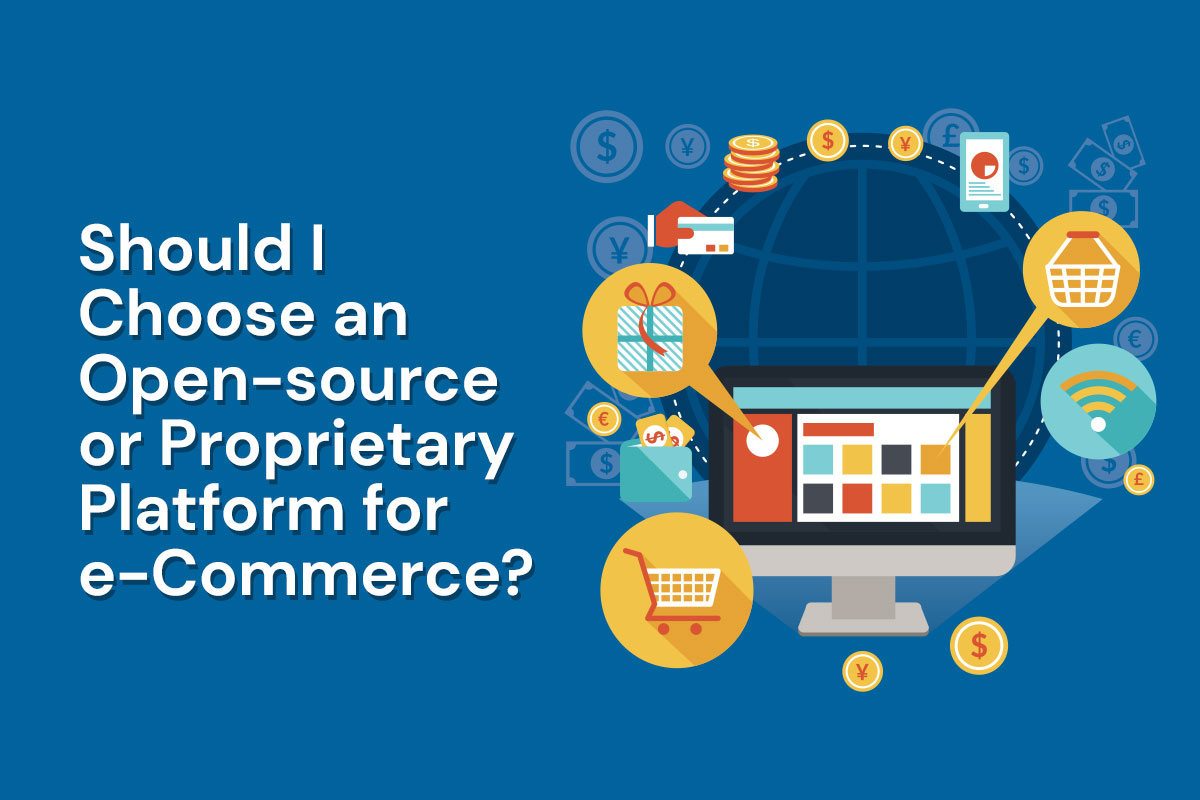During a meeting this week, we discussed the best platforms for e-commerce for a brand new shop being built from the ground up. There are so many decisions to make that the choice can be overwhelming, but one of the first decisions must be whether to choose an open-source platform, or to use a third-party vendor. By “open source,” we mean that the base software is free and in the public domain. You (or rather your web development company) installs and configures the software on your own hosting package. The options for customization are great, but so is the responsibility to maintain it with updates and security patches, and if the website goes down or gets hacked, that responsibility also lies with you. Proprietary e-commerce platforms are run by various third-party companies, who typically specialize in making it easy to set up a shop online. Each has varying degrees of limitation. Some have a narrow bank of templates to choose from. You may have limited payment options, shipping options, or customer interaction options. But in turn, they also offer you 99.9% uptime, reasonable costs for hosting and payment processing, and lots of support. How to decide? Find websites selling products that are similar to yours—and have a look relatively similar to what you want. Go through the ordering process as far as you can. Do you like how they did things? Did the website they’re using have a nice way of displaying product thumbnails? Did you like how it displayed the product options and product description? Did it look modern and fresh or old and dated? If you can identify the system they’re using, it can be a contender.
An aside: some e-commerce websites are one of a kind—particularly ones with extremely complex ordering functions. While it’s certainly possible to build an e-commerce platform from scratch, it’s an expensive and error-prone proposition to consider every aspect of the ordering (and possibly fulfillment) process in designing new software.
Some of the most popular open-source platforms for e-commerce include Magento, WooCommerce (which integrates with WordPress), PrestaShop, and OpenCart. With a platform like Magento, the sky is the limit. In a fairly recent episode of Shark Tank, Mark Cuban gave two entrepreneurs that he had taken under his wing a verbal dressing-down for their complaints about their e-commerce platform. If Mark Cuban is saying that this platform will meet their needs adequately, he knows what he’s talking about. We had to do a little snooping to see what platform they were complaining about, and lo and behold, it was Magento. Just this week we ordered custom labels online. This website allowed us to chat with a support agent, upload our own artwork, add text or stock graphics from their font and clip art libraries, and preview the labels. That is some serious functionality. And when we looked at the source code… it was Magento. The takeaway here is that just about anything is possible with an open-source platform—for a price. (We’ve been pitched the opportunity to move a website to Magento Enterprise… for about $300,000.) That said, we are not advocating for Magento as the be-all, end-all solution; many of these other solutions may be just perfect for your needs! This article contains a good list of current, popular e-commerce platforms, and it’s a good jumping-off point to learn more about one that you’re currently interested in.
Proprietary e-commerce providers include Shopify, BigCommerce, 3dcart, and Big Cartel. Even online website building services like Wix, Weebly, and Squarespace offer versions of e-commerce platforms, though those may be too limited if you require a great deal of functionality and/or customization. Shopify, BigCommerce, and 3dcart all offer modern, streamlined templates that work well in a mobile environment. They have built-in search engine optimization features and social media integration. Big Cartel in particular specializes in serving artists, jewelry makers, crafters, and musicians. There are so many wonderful options in this space that it’s critical to go over their sample websites with a fine-toothed comb and confirm whether their offerings match your requirements.
Regardless of whether you choose an open-source or proprietary platform, some critical questions to ask yourself:
- What payment method do I want to use? (Some platforms, like Squarespace, lock you down into one payment method—in their case, Stripe.)
- Will my product have custom options? Are you selling shirts that come in 5 sizes and 10 colors? Those are custom options, and you need to pick a platform that allows for plenty of custom options.
- Do I need inventory tracking?
- Do I need to use this system for tracking shipping? If so, it needs to have a way to integrate with your preferred shipping method, whether that’s the USPS, FedEx, or UPS.
- Am I selling products, or services? If you’re selling services, be sure to look at other websites that are selling similar services and see what platform and processes they’re using. The fulfillment of a service can be very different from the fulfillment of a physical product. (At this point, we do not recommend using Squarespace for selling services, for example.)
Want to talk more about e-commerce? Leave us a comment or contact us for a consultation.






